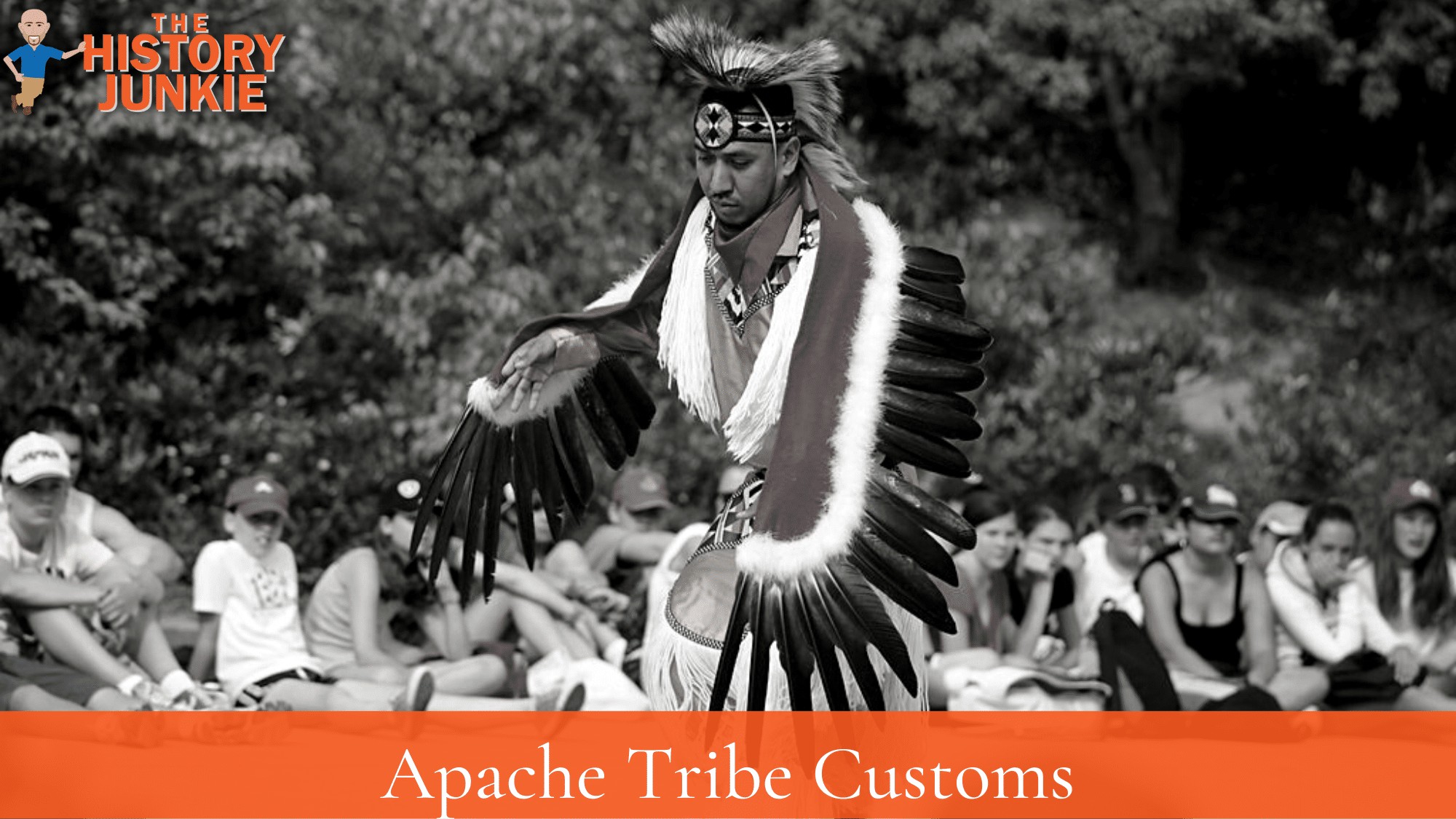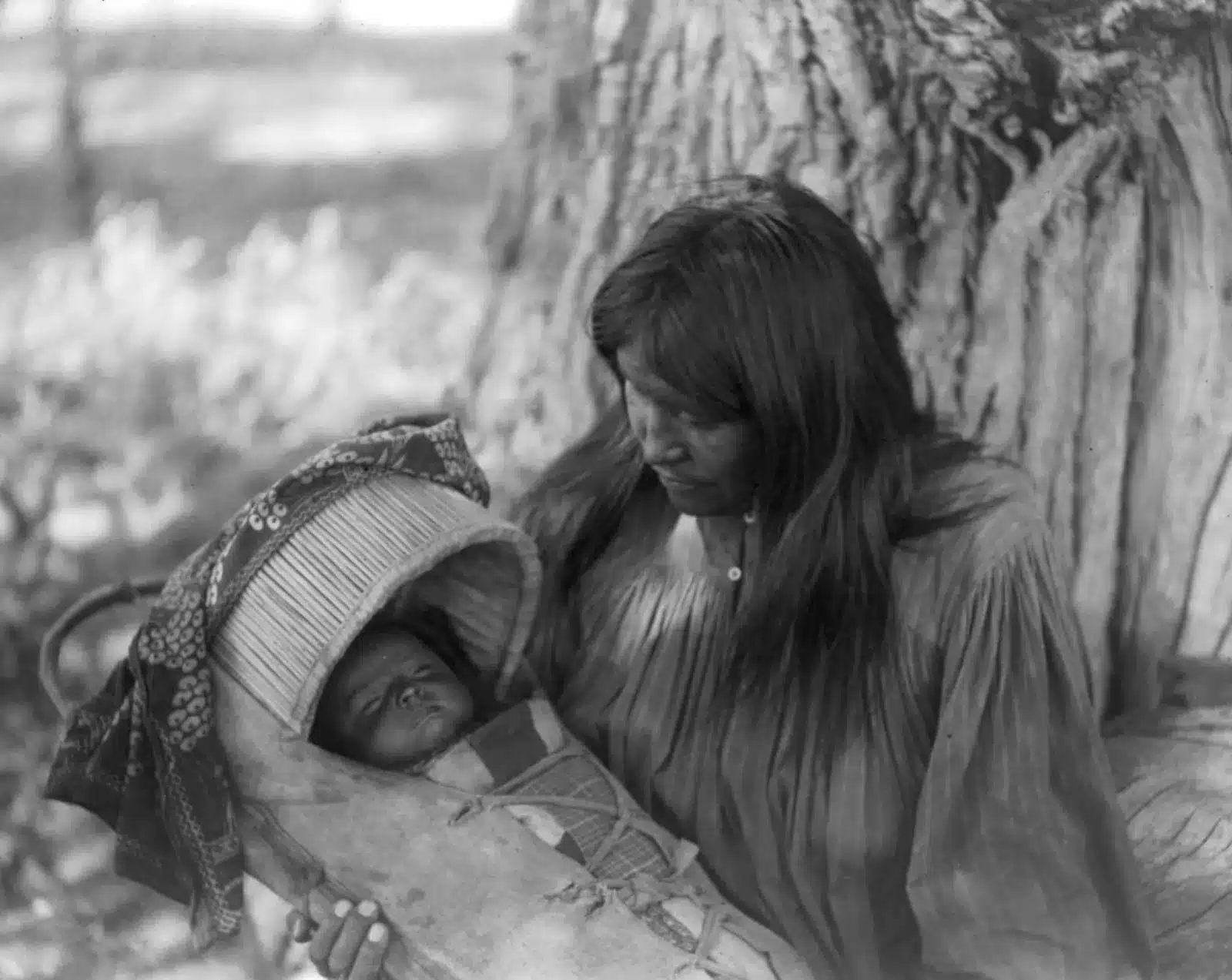Apache Tribe Customs are unique to American culture but not much different from Native American Culture in Native American History.

While the ceremonies may differ, each Native American tribe has a similar ceremony for each of the following milestones.
Jump to:
Apache Tribe Custom: Marriage
When an Apache man marries, he goes and lives with his wife's younger sister and/or brother.
He is then charged with providing for his wife and her parents. The main idea is the provision aspect. An Apache man must be able to provide for his wife and her family.
While they did allow polygamy, the same principle applied: if a man took another wife, he was required to provide for her and her family as well as the others. If he was not able to do so, then he could not take another wife.
Apache Tribe Custom: Babies

The Cradleboard Ceremony consisted of a medicine man or woman blessing the child with cattail pollen.
If the baby was male, he was placed in the cradleboard. Then he was lifted by the medicine person in four directions, the first always being east.
If the baby was female the custom was similar, except that she was lifted up facing east prior to being placed in the cradleboard.
As the babies grew and began to walk, there was another custom, which was called the Moccasin Ceremony. This took place after the baby took its first steps and was done to bless the child to walk a strong, straight path in life.
The baby was given new moccasins and walked a path of pollen that led east.
Apache Tribe Custom: Manhood
The Apache tribe prepared boys for manhood through physical tests when they were very young. One example was to help build strength and endurance as they grew older.
When the boys became a nuisance to an elder, the elder would tell the boys to run to the top of the mountain and come back again. The distance would vary depending on their age. As they got older, the targeted mountain would be taller, resulting in more endurance.
Fathers would also have their sons hold water in their mouths to practice breathing through their noses. This was extremely important living in a desert climate because breathing through one's mouth could result in dehydration, which could then lead to death.
Apache Tribe Custom: Womanhood

Females also had their own rite of passage.
When the girls had their first menstrual cycle, the Apache tribe performed a Sunrise Ceremony.
The ceremony included a special feast that was made by the female's relatives, friends, and neighbors and a special ritual bath that was performed by a female member of the tribe.
She was then dressed in a unique ceremonial outfit. Then, a male from the tribe would chant creation songs as the girl performed ceremonial dances. The dancing would continue into the evening when masked dancers with wooden masks would then dance with the female.
Later, men and women would combine to dance in celebration of womanhood.
This ceremony would last for four days, ending the morning of the fifth day.
The Apache believed this ceremony to be crucial to the long life and health of young women.
Apache Tribe Customs: Becoming Chief
When a chief was selected, it was done in a democratic way. The Apache currency for their leadership was respect, and if you did not have the respect of many in the tribe, then you would lose your standing.
When a new chief needed to be decided, it was left to the heads of families. If the head of a family did not agree with the choice, then they would leave the meeting.
If too many heads of the family left the meeting, then the new chief would lose his standing, and a new chief would need to be selected.
For the Apache, it was important that the members of the tribe be able to put their trust in their leader.
